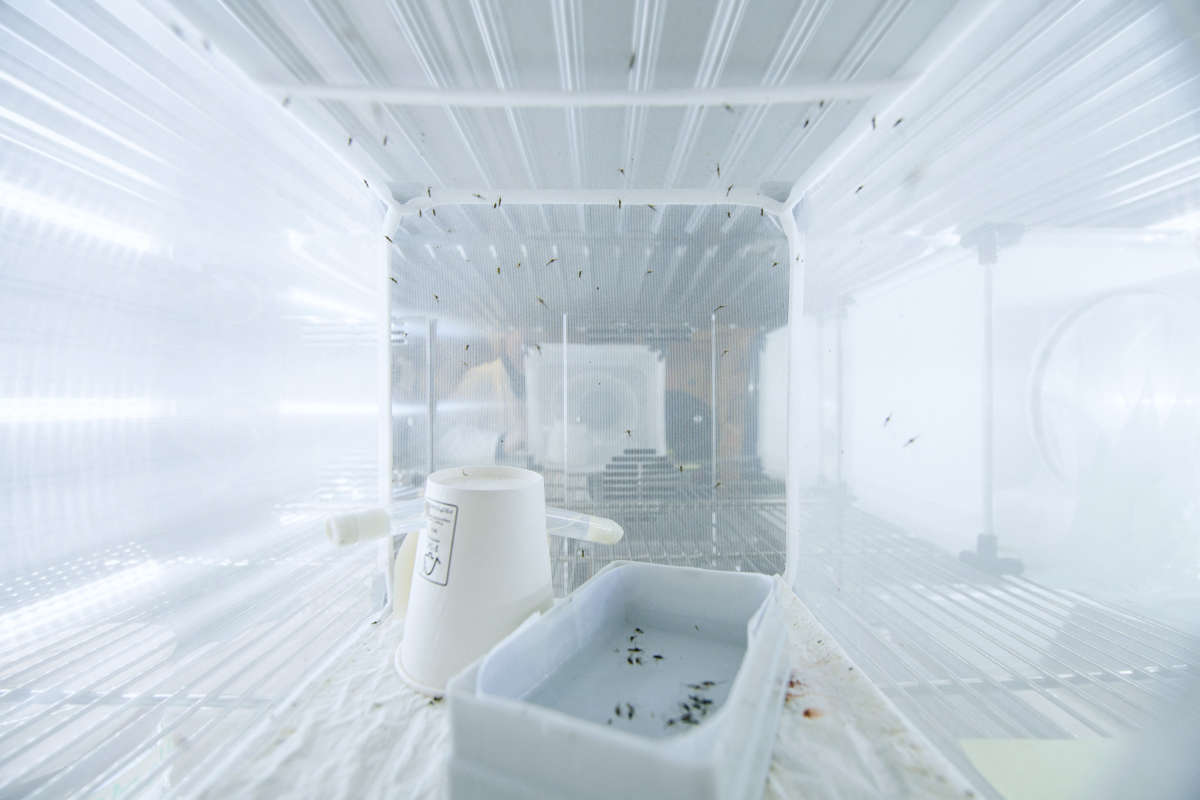Support justice-driven, accurate and transparent news — make a quick donation to Truthout today!
A study published Wednesday in the journal Nature Communications warns that attempting to fight the climate crisis using geoengineering — a method often promoted by the fossil fuel industry — could have the devastating consequence of exposing a billion additional people in vulnerable countries to the mosquito-borne disease malaria.
The first-of-its-kind study, compiled by a team of researchers from the U.S., Bangladesh, South Africa, and Germany, examines the potential global effects of using solar radiation management (SRM) to combat planetary warming. The strategy, long viewed with skepticism by environmentalists and scientists, involves spraying aerosols into the atmosphere to reflect solar rays away from Earth, providing a kind of “chemical sunshade.”
The research team used climate models to simulate possible malaria transmission under future scenarios with medium or high levels of global warming, and with and without geoengineering.
“In both medium- and high-warming scenarios,” the researchers found, “malaria risk was predicted to shift significantly between regions; but in the high-warming scenario, simulations found that a billion extra people were at risk of malaria in the geoengineered world.”
Colin Carlson, an assistant research professor at Georgetown University Medical Center and the lead author of the new study, said that cooling the planet through geoengineering “might be an emergency option to save lives, but it would also reverse course” on recent malaria transmission declines in lowland sub-Saharan Africa, southern Asia, and other regions.
“If geoengineering is about protecting populations on the frontlines of climate change,” said Carlson, “we should be able to add up the risks and benefits — especially in terms of neglected health burdens, such as mosquito-borne disease.”
The study found that while some areas would likely see malaria transmission increase under the high-warming, geoengineered scenario, other regions — such as the Indian subcontinent and the highlands of East Africa — could see malaria risks decline.
“It cuts both ways: some countries will benefit and other countries will suffer,” study co-author Mohammad Shafiul Alam, a malaria specialist at the International Center for Diarrhoeal Disease Research in Bangladesh, told Reuters.
Geoengineering is often framed as a tool for climate justice. Today, our new study in @NatureComms challenges that idea, showing that solar geoengineering would create regional tradeoffs and potentially increases in malaria risk worldwide. (1/4)https://t.co/tckv88HIL0 pic.twitter.com/55hhbFhjcX
— Colin Carlson (@ColinJCarlson) April 20, 2022
Scientists have long raised concerns about the public health implications of large-scale geoengineering, but the possible impact on the spread of specific diseases is understudied terrain.
“The potential for geoengineering to reduce risks from climate change remains poorly understood, and it could introduce a range of new risks to people and ecosystems,” Christopher Trisos, a senior researcher at the University of Cape Town in South Africa and one of the new study’s authors, said in a statement Wednesday.
As Robinson Meyer, a climate writer for The Atlantic, explained in his detailed write-up of the study, “The trade-off between geoengineering and malaria emerges for two reasons.”
He continued:
First, solar geoengineering doesn’t perfectly turn back the clock on Earth’s climate. Even if you add enough sulfate aerosols to perfectly counteract the amount of warming from carbon pollution, you’re still changing the climate’s physics, not restoring what once was. Many geoengineering simulations produce strange phenomena, such as ‘tropical overcooling,’ wherein land near the equator is cooler than you would expect, even while territory near the poles remains much hotter.
And that’s a problem, because malaria does not have a linear relationship with temperature. The malaria parasite is spread by mosquitoes, which are cold-blooded and depend on the ambient air temperature to set the pace of their metabolism; malaria risk, then, tends to increase as the temperature gets hotter. It peaks at an average of 25 degrees Celsius, or 77 degrees Fahrenheit…
The study found that tropical overcooling and the ideal temperature for malaria transmission can interact in troubling ways. In some parts of the world, geoengineering took a place that would have been too hot to allow mosquito survival and brought it back into a survivable range. In others, it restored the close-to-25-degree-Celsius temperatures that mosquitoes need to thrive.
Carlson argued that the findings should prompt a closer examination of the unforeseen ripple effects of geoengineering methods, particularly as governments look to such schemes as potential alternatives to the massive and rapid cuts to carbon emissions that scientists say are needed to avert the worst of the climate emergency.
“The implications of the study for decision-making are significant,” Carlson said. “Geoengineering might save lives, but the assumption that it will do so equally for everyone might leave some countries at a disadvantage when it comes time to make decisions.”
In 2019, the U.S. — then led by the Trump administration — joined Saudi Arabia and Brazil in blocking a United Nations resolution that called for a study of the “potential transboundary risks and adverse impacts of carbon dioxide removal and solar radiation management on the environment and sustainable development.”
Two years later, the Intergovernmental Panel on Climate Change (IPCC) released a report warning that “the side effects of any of the known geoengineering techniques can be very significant.”
Press freedom is under attack
As Trump cracks down on political speech, independent media is increasingly necessary.
Truthout produces reporting you won’t see in the mainstream: journalism from the frontlines of global conflict, interviews with grassroots movement leaders, high-quality legal analysis and more.
Our work is possible thanks to reader support. Help Truthout catalyze change and social justice — make a tax-deductible monthly or one-time donation today.
